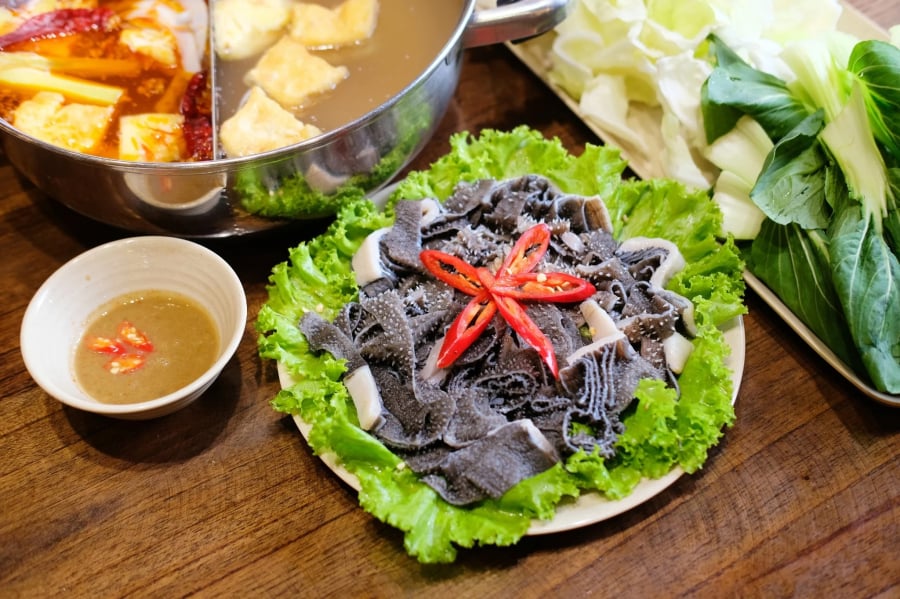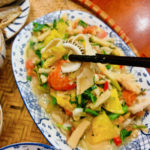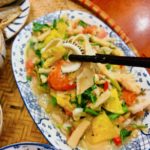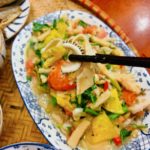Beef is renowned not only for its meat but also for its various other culinary delights, including beef tripe. Tripe, also known as beef blanket or omasum, is one of the four stomach chambers of a cow. Its primary function is to help compress food, aiding the digestion process. Dishes made from tripe are not only delicious but also nutritious, making it a popular choice for many food enthusiasts.
At first glance, tripe may make some people uncomfortable due to its dark color and unpleasant odor. However, once properly prepared and cleaned, tripe dishes reveal their unique and appealing flavors, sometimes even preferred over beef steak.

The appearance of beef tripe may be off-putting to some due to its dark color and strong odor.
In traditional markets and supermarkets, tripe can cost up to VND 350,000 per kg, significantly higher than regular beef. This is because each cow only has one tripe, so buyers often have to go to the market early to get fresh produce.
Mr. Chinh, a beef seller at Ha Dong Market in Hanoi, shared: “I only have a few tripes every day, so it’s best to come early to get the freshest tripe. Pay attention to the color of the tripe to gauge the health of the cow.”
The market also offers pre-cleaned tripe treated with chemicals to make it look brighter and whiter. While this type may be visually appealing, it often feels dry and lacks the natural sliminess when touched.

Tripe can be quite expensive, costing up to VND 350,000 per kg in traditional markets and supermarkets.
Cleaning tripe is a meticulous and time-consuming process. First, impurities are removed by scrubbing the tripe with lime, then rinsing it with warm or slightly boiling water, and finally soaking it to make it whiter. The second rinse ensures the complete removal of any remaining impurities.
After preliminary cleaning, salt the tripe and squeeze it gently, then rinse again with water. To eliminate any unpleasant odors, soak the tripe in a mixture of ginger or alcohol and water. Finally, rub the tripe with lime or vinegar to retain its natural chewiness and eliminate any lingering odors.
Tripe can be prepared in various mouthwatering dishes, such as stir-fried tripe with laksa leaves, pickled tripe, and tripe salad, with the latter being the most popular choice.

Tripe can be prepared in a variety of delicious dishes.
At restaurants and street food stalls, tripe salad stands out for its sweet and sour flavors and chewy texture, offering a unique culinary experience.
In recent years, a tripe salad stall on Cau Giay Street in Hanoi has gained immense popularity. A plate of this delicious salad costs between VND 100,000 and VND 120,000, and customers can choose to dine in or take away. The owner shared that the stall is open from 4 PM to 8 PM daily and sells around 200-300 plates of tripe salad each day. “I have to hire 2-3 employees to help prepare and serve the tripe, ensuring cleanliness and taste for our customers. This area has many offices and students, so our stall is always busy,” the owner added.

































